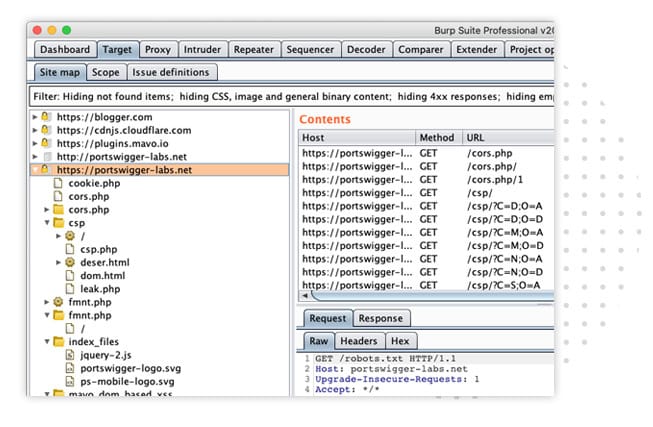
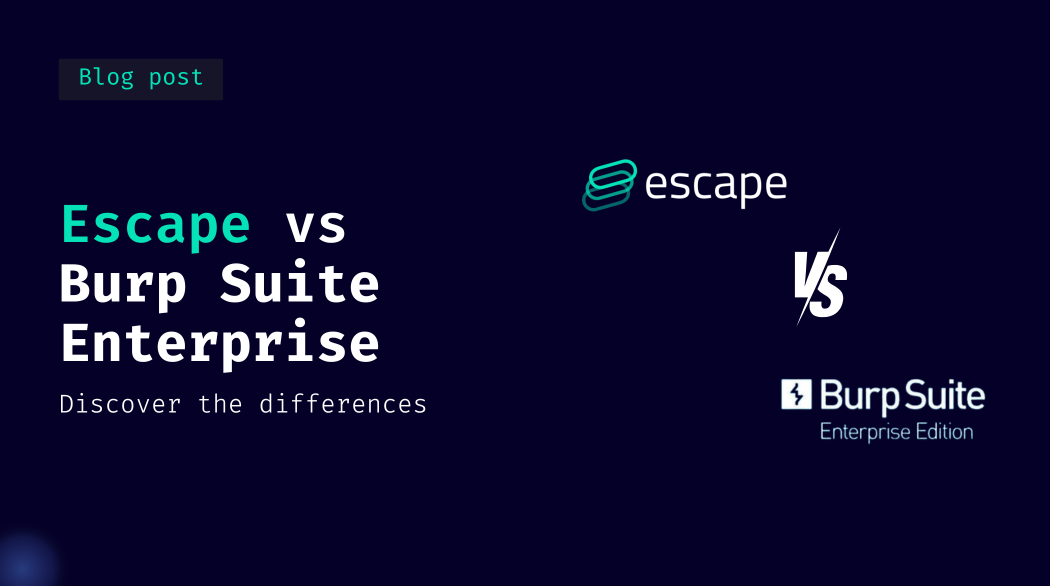
Today, attackers prioritize exploiting an application's business logic flaws and API vulnerabilities, which may result in the unauthorized extraction of sensitive data. Understanding an application's business logic is challenging, and requires a security platform that comprehends an application's functionalities to address complex API attacks.
So I think there's going to be a long time before that happens, and I suspect that we're going to have a lot more like us, as security folks, we'll probably stop focusing on the foundational issues. And we'd be looking at much more difficult issues that our tooling has a hard time to find. Like business logic issues in itself very difficult or even AI-related issues securing AI and LLM in itself. – Jeevan Singh, Director of Product Security at Rippling, The Elephant in AppSec Podcast
Escape is the only API security solution that combines the capabilities of API inventory, API Security testing, and business logic security testing. Unlike DAST and classic pentesting tools, Escape does not only find vulnerabilities but also helps security teams automate their API inventory without any agent or additional software deployment.
In this article, we will highlight key differences between Escape and Burp Suite Enterprise that can impact your organization's defenses against targeted attacks and the protection of your organization's sensitive data. But first, let's lay the foundation by defining the key elements for our comparison.
💡
This article is just one in the series of comparisons we're presenting, where we put Escape head-to-head with other API security tools. Our ongoing series will consistently feature the same key elements for comparison, so feel free to dive straight into the zoom-in section if you've already read it before.
When it comes to keeping your APIs safe, you need a good API security solution. Let's examine the main features that make the best API security tools special.
API discovery & API inventory
Don’t know what your developers expose online? Here is when API Discovery and Inventory come into play. Every undocumented API feels like a ticking time bomb, a potential gateway for malicious breaches.
To ensure that the organization's data and services remain protected and bridge the gap between innovation and security, your top priority is to create a comprehensive inventory of all used APIs.
Automated API Discovery tools are indispensable to ensure efficiency, accuracy, and comprehensive coverage. Manual discovery should be seen as a complementary approach rather than the primary method in modern API management.
CI/CD pipeline integration
If you want to catch and fix security issues early in your development process, you must integrate security within your CI/CD pipeline. It ensures your applications are built securely from the ground up and helps your organization shift left in the testing of APIs.
Support in remediation
Tired of struggling with developers to implement security in the SDLC? Making life easier for your developers is important to ensure swift security fixes. Detailed code snippet remediation helps break down complex security issues into simple, actionable steps, so your developers can quickly fix any problems that pop up.
Ease of deployment
No one wants a complicated implementation process. The faster you can start discovering and scanning your APIs, the faster you can secure your organization. Agentless solutions are your best bet: they enable data gathering without the need to alter the application's code or insert any agents into the application's communication path.
No fuss, just quick and efficient protection.
Testing undocumented APIs
Hidden vulnerabilities pose a significant risk. It's critical to discover and test undocumented APIs to find those hidden weaknesses and keep your data safe from potential threats.
Do you also want to ensure that your organization fully complies with HIPAA or PCI-DSS 4.0? Then, you need to ensure the security of all APIs, including those that are undocumented. Testing is crucial for ensuring compliance with these and many other regulations.
Contextual risk-based prioritization
Prioritizing security risks is vital. Contextual Risk-Based Prioritization is a strategy used in risk management and security to determine the priority of addressing vulnerabilities or threats based on their potential impact and context within a specific environment.
It helps you focus on what's most important first, making sure you're directing your efforts where they matter the most.
Head-to-head comparison: Escape vs Burp Suite Enterprise
Now, let's dive into the features, strengths, and limitations of two leading API security testing solutions: Escape and Burp Suite Enterprise:
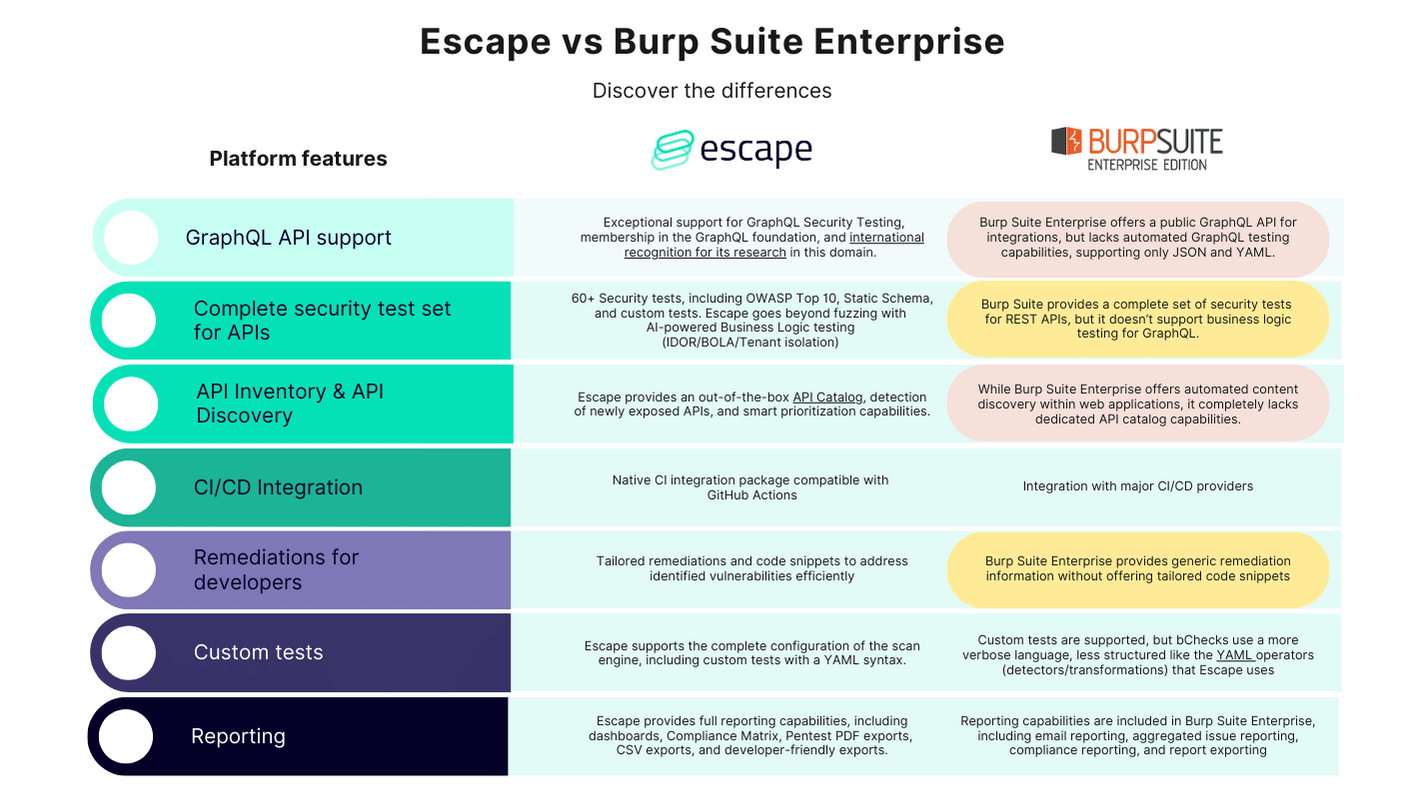
GraphQL API support
GraphQL, a query language for APIs, has gained significant traction in recent years due to its flexibility and efficiency. Escape distinguishes itself with exceptional support for GraphQL Security Testing, leveraging its membership in the GraphQL foundation and international recognition for its research in this domain.
You can learn more how Escape stands out for GraphQL APIs here.
On the other hand, according to their website, Burp Suite Enterprise offers a public GraphQL API for integrations, but lacks automated GraphQL testing capabilities, supporting only JSON and YAML.
Watch Escape's talk on GraphQL Security at the GraphQL conf 2023
Full security test set for APIs
An effective API security testing solution should provide a comprehensive set of security tests to identify vulnerabilities across various attack vectors.
Escape surpasses expectations in this regard with 60+ Security tests, including OWASP Top 10, static schema checks, and custom security tests. Moreover, Escape goes beyond traditional fuzzing techniques by incorporating AI-powered Business Logic testing, addressing critical vulnerabilities such as IDOR, BOLA, and Tenant Isolation.
While Burp Suite Enterprise provides a comprehensive set of security tests for REST APIs and basic testing for GraphQL, it falls short in offering comprehensive business logic testing for GraphQL.
CI/CD Integration
Both Burp Suite Enterprise and Escape provide integration with major CI/CD providers. Escape offers a native CI integration package compatible with GitHub Actions, streamlining the integration of security testing into the development workflow.
Jira integration
Efficient collaboration and issue tracking are essential for effective vulnerability management. Both Escape and Burp Suite Enteprise provide seamless native integration with the Jira ticketing system, facilitating streamlined communication and issue resolution.
Up-to-date API Inventory, and continuous API discovery
Maintaining an up-to-date inventory of APIs and proactively identifying newly exposed APIs are essential components of API security management and governance. Escape excels in this area with its out-of-the-box API catalog, smart prioritization capabilities, and proactive detection of newly exposed APIs.
You can watch how Escape's agentless API discovery and inventory works in this demo
On the other hand, while Burp Suite Enterprise offers automated content discovery within web applications, it lacks dedicated API catalog capabilities. As a result, users may encounter challenges in comprehensively discovering and managing APIs within their applications.
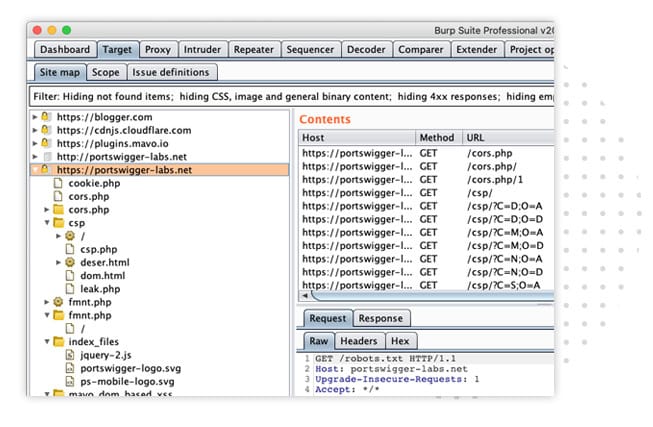
Without specialized support for API discovery, Burp Suite Enterprise does not provide the same level of visibility and proactive detection as Escape, potentially leaving organizations vulnerable to undiscovered API-related vulnerabilities.
Remediation for developers
Detecting vulnerabilities is only the first step; providing developers with actionable remediation guidance is equally important.
Escape goes above and beyond by offering tailored remediations and code snippets to address identified vulnerabilities efficiently.
In contrast, Burp Suite Enterprise provides generic remediation information without offering tailored code snippets, potentially increasing the burden on developers.
Custom tests
Both Escape and Burp Suite offer solutions for custom security tests. On Escape's side, this feature is called "Escape rules," while on Burp Suite's side, it's called "BChecks."
Once implemented, security scanners run these tests in addition to its built-in scanning routine, helping you to make your testing workflow as efficient as possible.
While bChecks and Escape custom tests are pretty similar on the surface, bChecks use a more verbose language, less structured like the YAML operators (detectors/transformations) that Escape uses. The biggest difference is also in the feedback-driven exploration engine and the scalar inference system that is built into Escape, helping you cover all the routes with confidence and abstractions of data manipulated, and easily available through Custom Tests.
Reporting
Escape shines in this aspect with its robust reporting capabilities, offering dashboards, Compliance Matrix, Pentest PDF exports, CSV exports, and developer-friendly exports.

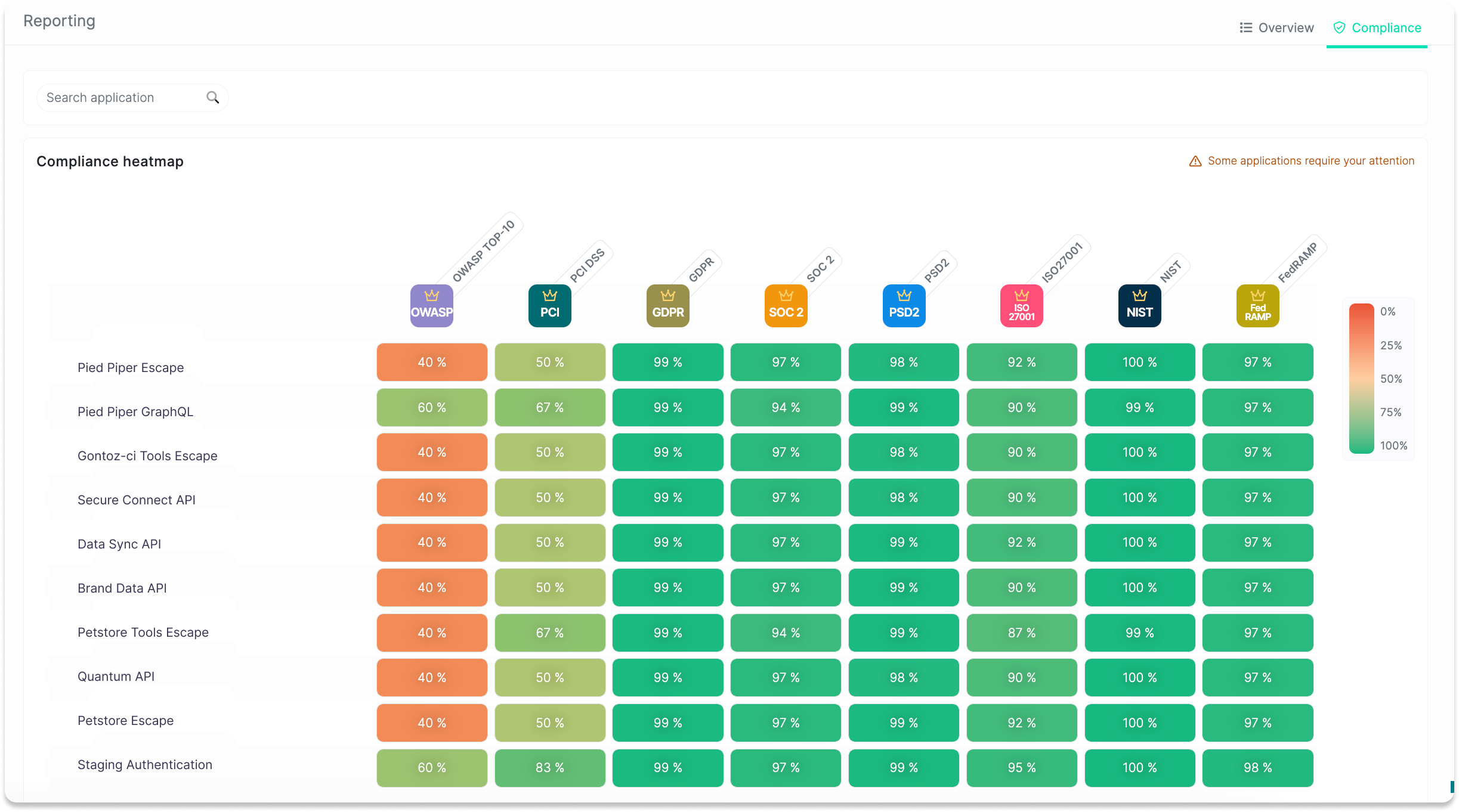
A general example of PCI DSS Escape Compliance Report and Compliance Matrix
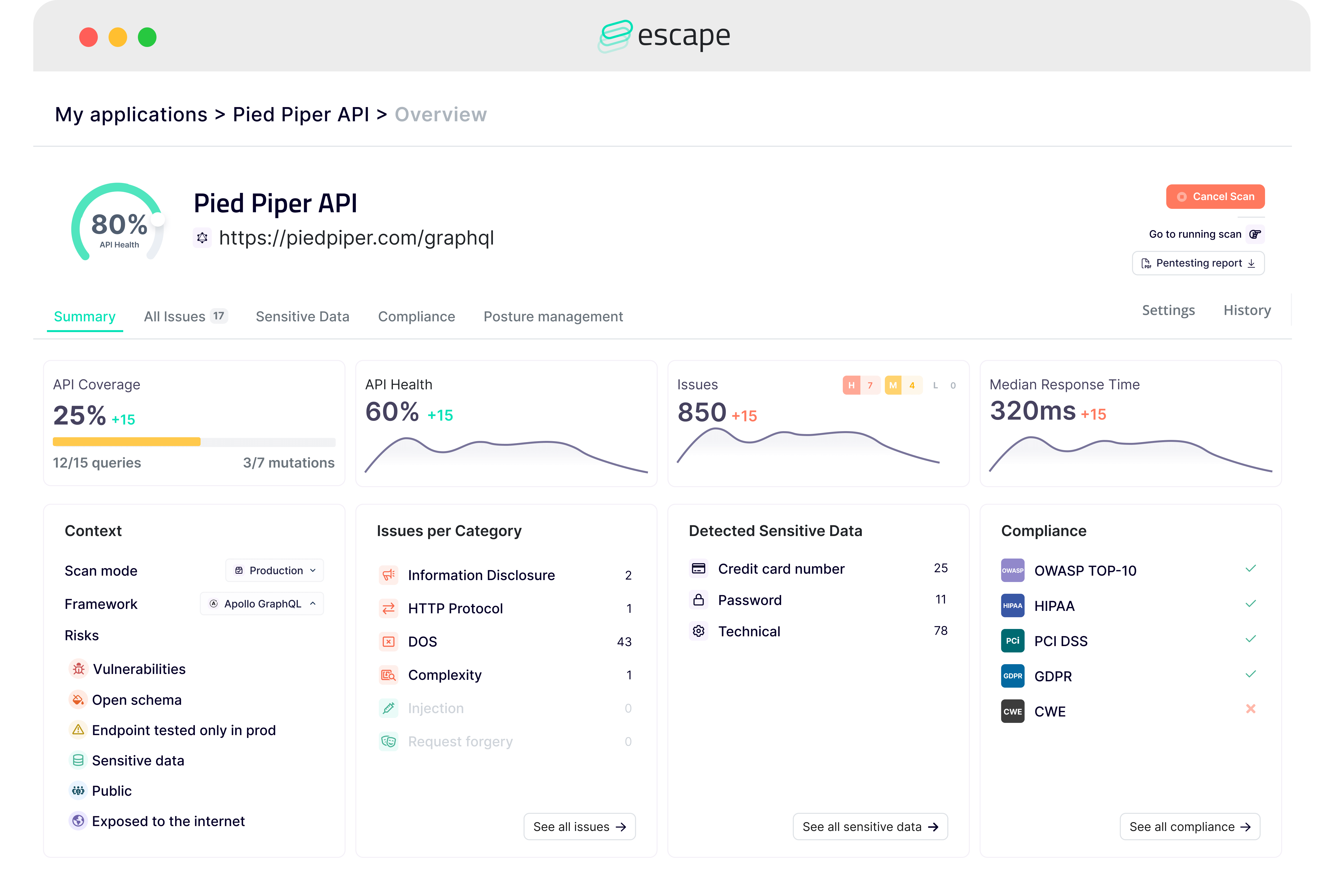
While reporting capabilities are included in Burp Suite Enterprise, including email reporting, aggregated issue reporting, compliance reporting, and report exporting, they are not as extensive as those offered by Escape:
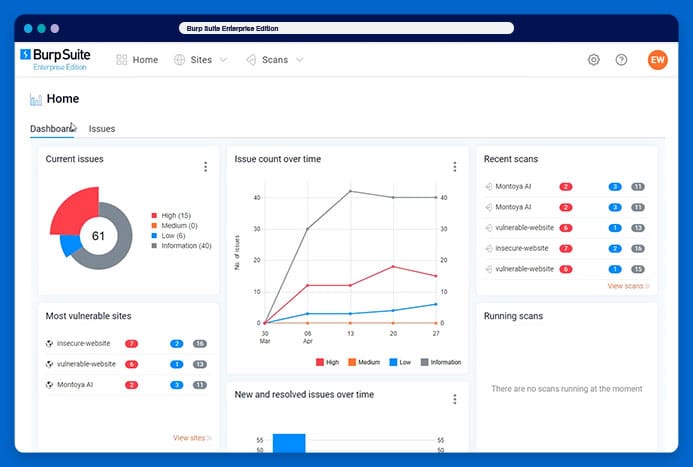
Conclusion
In conclusion, both Escape and Burp Suite Enterprise offer valuable solutions for API security testing, but Escape emerges as the superior choice for organizations looking for unified API discovery and security capabilities, especially for GraphQL APIs.
With its exceptional support for GraphQL security testing, advanced business logic testing capabilities, proactive API discovery, seamless CI/CD integration, tailored developer remediations, and extensive reporting capabilities, Escape provides a holistic approach to API security.
Ready to reduce your organizational risks?
*** This is a Security Bloggers Network syndicated blog from Escape - The API Security Blog authored by Escape. Read the original post at: https://escape.tech/blog/escape-vs-burpsuite/
如有侵权请联系:admin#unsafe.sh